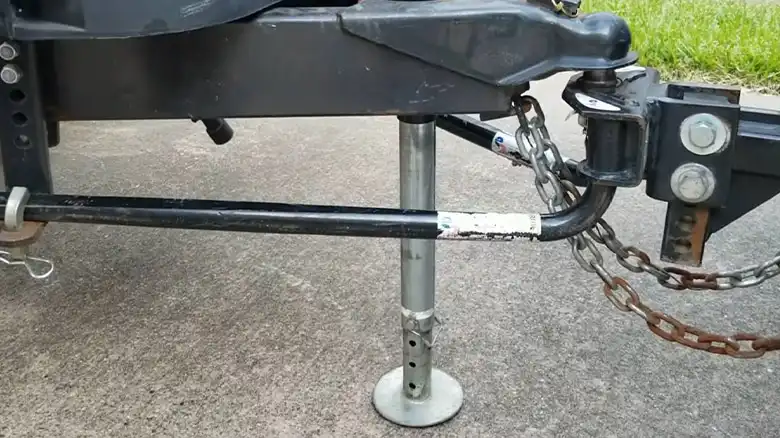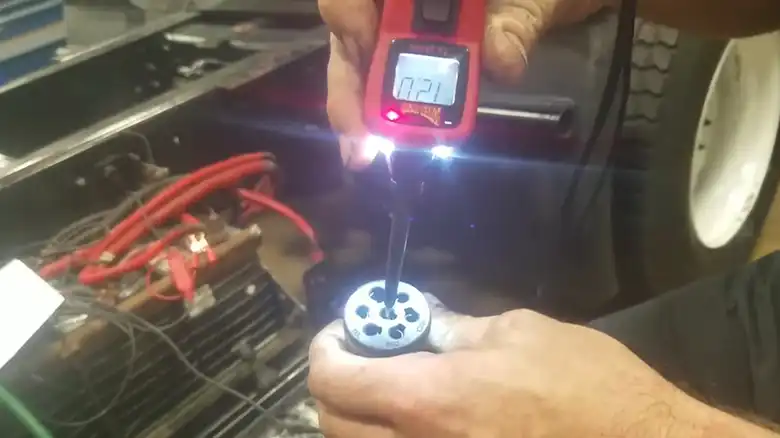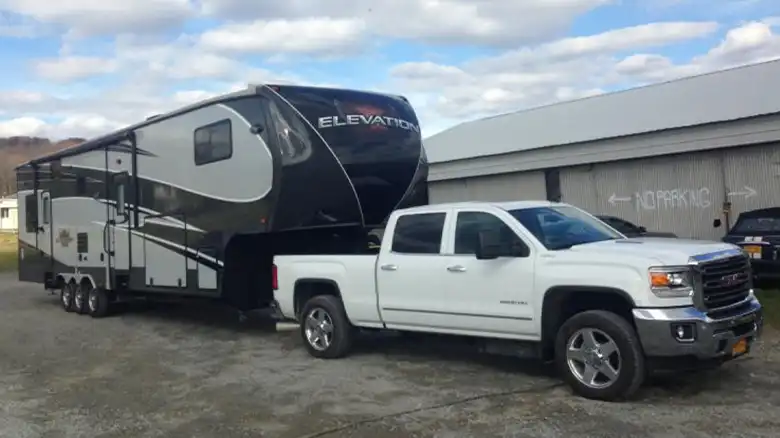Before we dive into the adjustment process, it’s essential to understand what a sway bar is and why it’s crucial for towing a travel trailer. A sway bar, also known as a stabilizer bar or anti-sway bar, is a component that connects the tow vehicle (usually a truck or SUV) to the travel trailer.
The primary purpose of a sway bar is to reduce the lateral movement or swaying of the trailer while it’s being towed. This side-to-side movement, often referred to as “sway,” can be dangerous and cause accidents if not properly controlled.
When I first started towing my travel trailer, I quickly realized the importance of stability on the road. Uneven terrain, crosswinds, and passing trucks can make the journey a nerve-wracking experience. That’s when I discovered the benefits of a sway bar.
In this article, I’ll share my personal experiences and guide you through the process of adjusting a sway bar for a travel trailer. I’ll also provide some expert tips and answer frequently asked questions to help you do it effectively and with ease.

Introduction to Sway Bars in Travel Trailers
Here’s how I adjusted my sway bar to experience these benefits:
Gather the Necessary Tools:
Before starting the adjustment process, ensure you have the following tools and equipment:
- Your travel trailer and tow vehicle
- A sway bar kit (if not already installed)
- A wrench or socket set
- A tape measure
- A level
Find a Level Surface:
Park your travel trailer and tow vehicle on a flat and level surface, like a parking lot or driveway. This will ensure accurate adjustments.
Measure the Hitch Height:
Using your tape measure, measure the height of the hitch ball on your tow vehicle. Write down this measurement as it will be important later.
Install the Sway Bar:
If you haven’t already installed a sway bar, follow the manufacturer’s instructions to do so. It typically involves attaching the sway bar to both the tow vehicle and the trailer, making sure it’s level and parallel to the ground.
Connect the Trailer:
Hitch your trailer to your tow vehicle, ensuring that the hitch ball aligns correctly with the trailer’s coupler.
Adjust the Sway Bar Tension:
Many sway bars come with adjustable tension settings. To reduce sway, tighten the sway bar’s tension by turning the adjusting bolt or knob (consult your sway bar’s manual for specifics). If the sway bar is too tight, it can make your trailer ride too stiff, so it’s essential to find the right balance.
Test Drive:
Take your rig for a test drive. Pay attention to how it handles during acceleration, braking, and while making turns. Make adjustments as needed until you achieve a smoother and more stable ride.
Fine-Tune as Necessary:
Periodically check the tension and make minor adjustments if you encounter sway or instability during your travels. Conditions may change, so it’s essential to adapt accordingly.
Step-by-Step Guide to Adjusting Your Sway Bar
Enhanced Stability: The most significant advantage of using a sway bar is the enhanced stability it provides. It minimizes the side-to-side rocking motion, making your towing experience safer and more comfortable.
Improved Control: Sway bars help you maintain better control over your trailer, especially in challenging conditions like strong winds, sudden lane changes, or emergency stops.
Reduced Stress: A well-adjusted sway bar reduces stress on both the tow vehicle and the trailer, resulting in less wear and tear on your equipment.
Increased Confidence: When you’re confident in your towing setup, you can relax and enjoy the journey, making your travel trailer adventures even more enjoyable.
Expert Tips for Proper Sway Bar Tuning
Here are some expert tips that I’ve learned along the way to help you adjust your sway bar effectively and easily:
Follow the Manufacturer’s Instructions: Each sway bar can have its unique adjustment process, so be sure to read and follow the manufacturer’s guidelines to ensure proper setup.
Start with a Lower Tension Setting: When first adjusting your sway bar, it’s a good idea to start with a lower tension setting and gradually increase it. This way, you can find the optimal balance without making your trailer too stiff.
Regularly Inspect and Maintain Your Sway Bar: Check your sway bar for wear and tear and ensure all connections are secure before each trip. This proactive approach can prevent issues on the road.
Consider Weight Distribution: Properly distributing the weight in your trailer and tow vehicle can also help reduce sway. Ensure your trailer is loaded evenly and that you have a weight distribution hitch if needed.
Pay Attention to Tire Pressure: Maintaining the right tire pressure in both your tow vehicle and trailer can have a significant impact on stability. Check and adjust the tire pressure as recommended in your vehicle’s and trailer’s manuals.
FAQs About Sway Bar Adjustment
1. Can I adjust my sway bar while on the road?
It’s not recommended to make significant adjustments while driving. Find a safe, flat area to park and make adjustments there.
2. Do I need a professional to adjust my sway bar?
While it’s possible to adjust your sway bar yourself, if you’re unsure or uncomfortable with the process, consulting a professional or a knowledgeable friend can be helpful.
3. Can I use a sway bar with any type of travel trailer?
Sway bars are compatible with most travel trailers, but it’s essential to check your trailer’s weight and the manufacturer’s guidelines to ensure proper usage.
4. How do I know if my sway bar is too tight or too loose?
If your sway bar is too tight, you might experience a stiff, uncomfortable ride. If it’s too loose, you’ll notice more sway and instability. The right tension strikes a balance between these extremes.
5. What if I’m still experiencing sway even after adjustment?
If sway persists, consider other factors that might contribute to instability, such as weight distribution, tire pressure, or the condition of your trailer’s suspension system.


